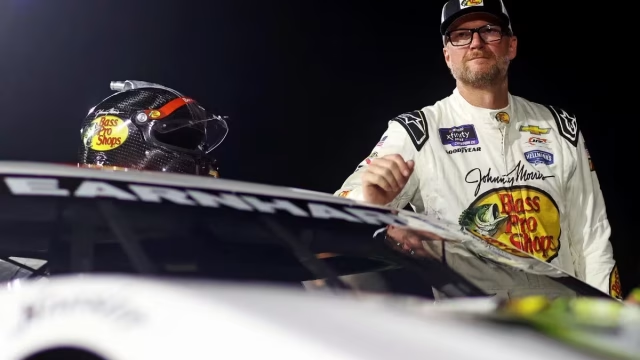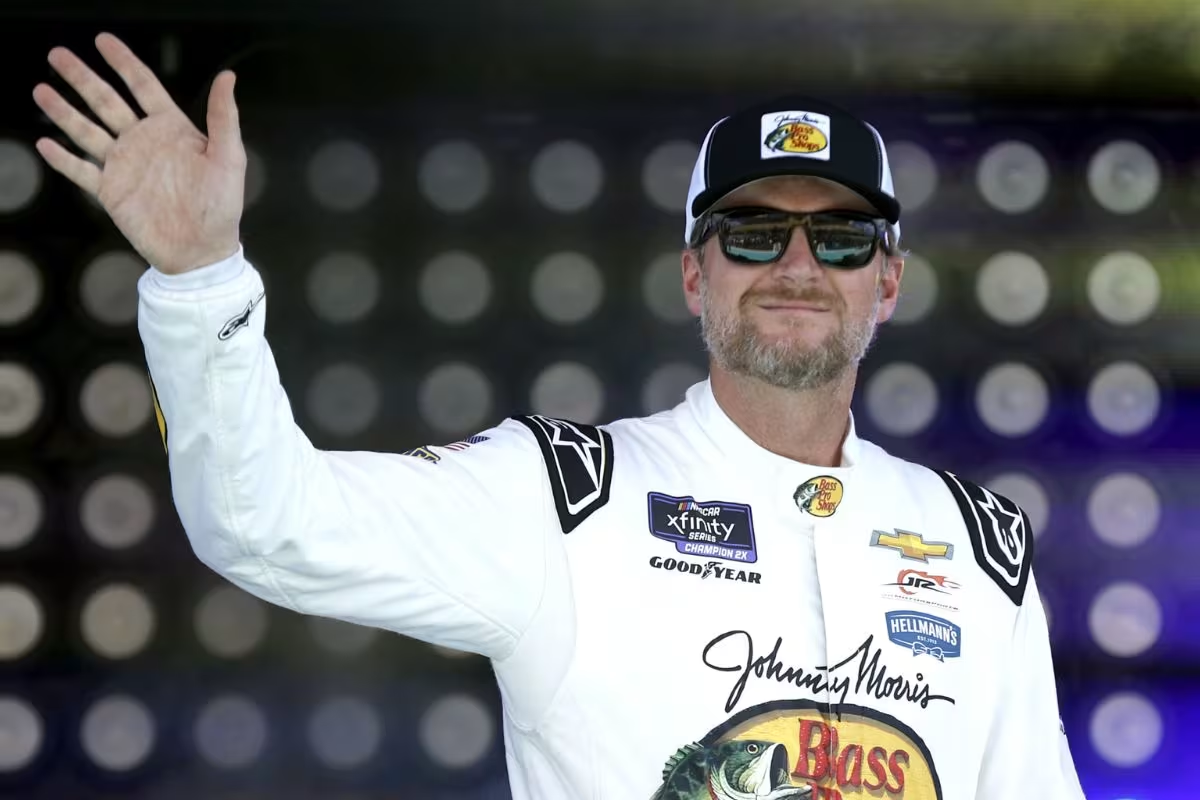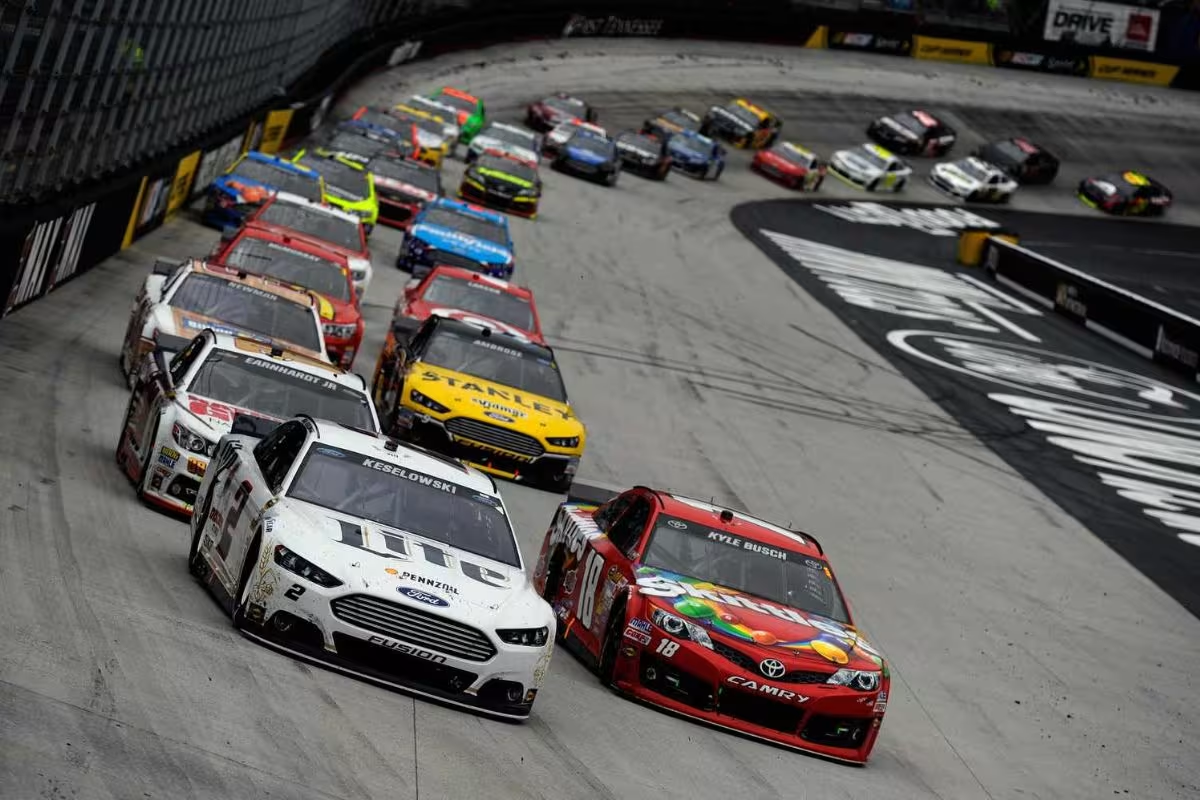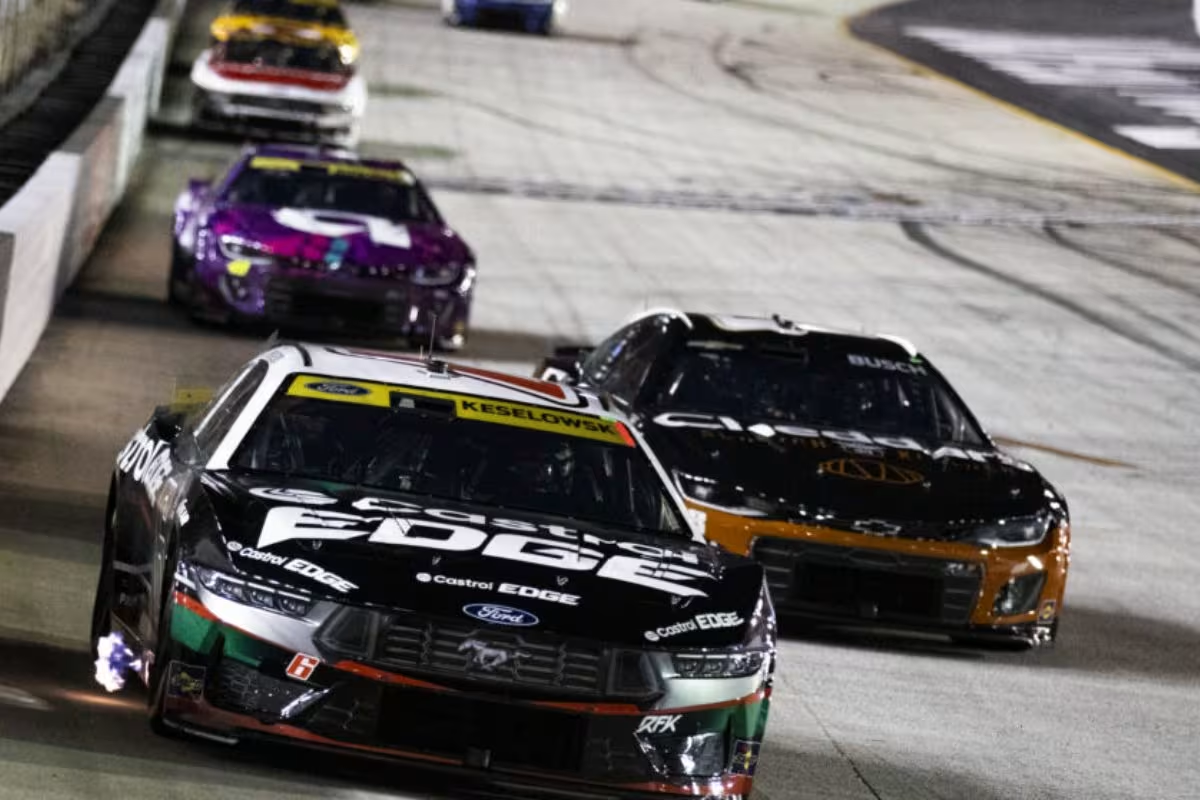Dale Jr. recalls his least favorite car and how he struggled with the Car of Tomorrow, calling it his least favorite. The car was tough to handle and felt too similar to every other car on the track. But, against the odds, this car somehow crossed the finish line first a few times. How did Dale Jr. pull off these surprising wins?
Key Highlights
- Dale Earnhardt Jr. reflected on the No. 8 car’s unexpected success at Martinsville despite crashing on the opening lap.
- The car’s lack of a right front fender inadvertently aided in managing tire temperature.
- Tactical decisions during the race showcased adaptability in overcoming initial adversity.
- The No. 8 car’s performance showed that resilience can lead to strong finishes, even with challenges.
- Dale Earnhardt Jr. emphasized that the legacy of the No. 8 car goes beyond mere victories, embodying the spirit of NASCAR.
Dale Earnhardt Jr.’s Career Reflection
As Dale Earnhardt Jr. reflects on his career, it’s clear that the journey has been marked by both victories and challenges. His voyage through the NASCAR circuit is punctuated by memorable moments, thrilling wins, and the occasional heartbreak.
Yet, it is his openness about the ups and downs that resonates with fans and fellow drivers similarly. In a recent episode of the Dale Jr. Download, he explored the complexities of his racing experiences, particularly when discussing the cars that defined his career.
Curiously, he highlighted a paradox: the worst car he drove, the Car of Tomorrow (CoT), still managed to clinch a race victory. This reflection demonstrates the often unpredictable nature of racing, where the driver’s skill can sometimes transcend the limitations of their equipment.
Dale Earnhardt Jr.’s ability to confront the less favorable aspects of his career adds depth to his legacy. While he achieved remarkable success, including two Daytona 500 victories and 26 wins in total, he also faced challenges that tested his resilience.
Critique of the Car of Tomorrow (CoT)
Dale Earnhardt Jr.’s frank critique of the Car of Tomorrow (CoT) reveals a complex relationship between safety and driving enjoyment in NASCAR. While the CoT was introduced to improve driver safety following the tragic death of his father, its performance left much to be desired. Earnhardt Jr. described the CoT as “an awful race car,” highlighting that it was not just a matter of aesthetics but also a major downgrade in driving experience.
“The car drove terrible. It’s an awful race car. I mean, I’m not a hater of the CoT, yeah, but I’m also, um, being honest that it drove awful… That was just a miserable start. We had these cars before the CoT that were fun as hell to drive… Then we went to this CoT that looked like a shoebox and drove, drove awful, just awful. It just drove terrible, and nobody could figure out how to make it drive great, even the people that won races.” – Dale Earnhardt Jr.
Key points of his critique include:
- Driving Experience: The CoT was perceived as difficult to handle, stripping away the joy that drivers experienced with previous models. Dale Earnhardt Jr. lamented that they had “fun as hell” driving the older cars, contrasting sharply with the CoT’s performance.
- Uniformity in Competition: Despite its design intentions, the CoT seemed to create a scenario where even winning drivers expressed dissatisfaction. Kyle Busch’s response after winning at Bristol encapsulated this sentiment, as he remarked, “Oh geez, that was miserable.”
- Safety vs. Enjoyment: While the CoT indeed improved safety, the trade-off was a less enjoyable racing experience. Dale Earnhardt Jr.’s intricate perspective highlights that while safety is paramount, the essence of racing—thrill and skill—should not be overlooked.
The Best Car That Never Won
While many cars in NASCAR history have achieved victory, some left a lasting impression despite never claiming a checkered flag. One such vehicle is Dale Earnhardt Jr.’s No. 8 car during the 2004 race at Martinsville, a prime example of resilience and performance against the odds. After crashing on the opening lap, the initial outlook was grim; the damage seemed to foreshadow a disappointing day. However, this car had other plans.
Dale Earnhardt Jr. recounted how the loss of the right front fender inadvertently kept the tire cooler, allowing him to push the limits of speed. His ability to adapt to the situation became evident as he navigated to avoid further damage, opting to drive on the curb to regain control. This tactical decision proved fruitful as he climbed back through the pack, ultimately finishing fourth or fifth.
“I’ve got no fender on the right front; I can’t touch this car; it’s going to bend my toe and ruin my day. So, I drived up on the curb and spun out, go to the back, drove all the way back to the front, and finished fourth or fifth… It was a good car.” – Dale Earnhardt Jr.
This instance highlights a critical facet of racing: sometimes, the best performance comes from unexpected adversity. The No. 8 car may not have crossed the finish line initially, but its capacity to endure and excel under challenging circumstances solidified its status as a memorable contender.
Racing Challenges and Tire Management
In NASCAR, managing tires effectively during long runs—often spanning 100 to 180 laps—poses one of the most substantial challenges drivers face. Dale Earnhardt Jr.’s recollections of racing without stages highlight this intricate aspect of the sport, where strategy and speed intertwine. The ability to adapt to varying speeds throughout the race is not just a skill; it’s an indispensable survival tactic on the track.
Tire management is significant for several reasons:
- Performance Consistency: Maintaining ideal tire pressure and temperature allows for consistent lap times, which is crucial for positioning throughout the race.
- Durability: Drivers must balance aggressive driving with the need to preserve tire life. Over-driving can lead to premature wear, potentially jeopardizing a strong finish.
- Pit Strategy: Understanding when to pit is essential. A well-timed pit stop can mean the difference between leading the pack or falling behind, making tire management a vital component of race strategy.
News in Brief: Dale Jr. Recalls His Least Favorite Car
In reflecting on the subtleties of racing, the dichotomy between personal preferences and performance outcomes becomes evident. The Car of Tomorrow, despite its shortcomings, illustrates the unpredictability inherent in motorsport.
This narrative emphasizes the complexities faced by drivers, where even the least favored car can achieve unexpected success. Ultimately, the challenges of tire management and racing dynamics highlight the intricate relationship between driver skill and vehicle capability, enriching the comprehensive tapestry of competitive racing.
ALSO READ: Dale Earnhardt Jr. Turns 50 and His Wife’s Sweet Gesture Steals the Spotlight



